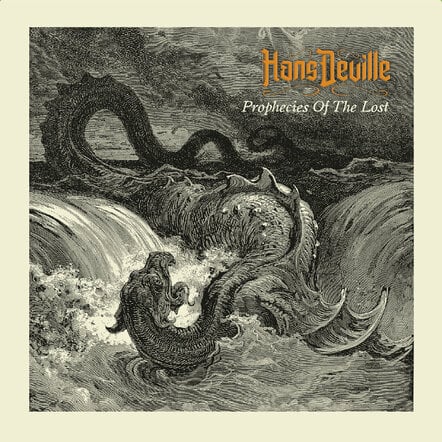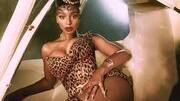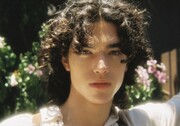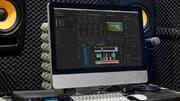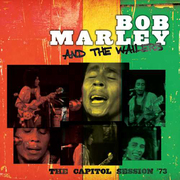New York, NY (Top40 Charts) "Prophecies Of The Lost" is the debut album from King Prawn guitarist Hans Deville. Recorded over lock down, it's a fusion of maritime folk, psychedelia and spaghetti western, all wrapped up in a raw punk energy. Half instrumental, half in collaboration with Hastings dark country vocalist Andrew J Davies. Turn down the lights, stare out to sea and let this album take you on its own unique journey.
Guitarist and producer HANS DEVILLE cut his rock'n'roll teeth with highly respected ska-punks KING PRAWN. It's not an uncommon story, but 2020 was a trying year and this isn't the only project born from a musician's desire to keep creating.
Setting up a studio in his Stained-Glass workshop, a hybrid album of mariachi, sea shanty and twangy western began to develop. Live brass was recorded by his ska punk buddies, even his mum lending an accordion playing hand on first single Porbandar.
In addition to the KING PRAWN brass boys, Richard Glover bass player of the mighty DUB WAR, makes a special appearance on the
Latino flavoured "Diva".
On hearing the works in progress, old time friend Karl "Lost" Horton introduced Hans to ANDREW J DAVIES from Hastings dark country band FRANK FROM BLUE VELVET.
The pair immediately hit it off with Andrew laying down the vocals that very evening, taking influence from his Welsh roots by incorporating four level harmonies, much favoured by male voice choirs, on Porbandar the sea shanty evoking first single. The collaboration continued with half the album featuring the Hastings based vocalist.
PROPHECIES OF THE LOST - Track by track dissection by Hans Deville.
Porbandar
Had Lee Hazelwood sung a sea shanty it may have sounded something like this! Hans wrote the music in his characteristic folk guitar building to epic western style, then King Prawn band mate Nikolai Jones penned the lyrics to add a poetic maritime twist, pensively delivered here with the moody baritone vocals of Andrew J. Davies. The recording features Han's mum playing an accordion she carried across the border when she fled from East to West Berlin in the 1950's.
The Baptist
This ballsy guitar riff and wailing harmonica was first intended to be one of several theme building 'instrumental bridges' between songs. On hearing the demo however, Andrew J. Davies was inspired to add a Delta blues style chorus and lyrics based on the storyline to the film 'Night Of The Hunter'. Harmonica is played is by Hans, who brazenly laid it down with an 'I can play this thing' punk attitude overriding any actual ability to play the instrument!
El Sueno
The melody to this song came to Hans in a dream (hence the title). He imagined this as a 60's western soundtrack with twangy electric guitar, Mexican rhythm accompaniment and Mariachi brass building to a dramatic crescendo.
Dark Clouds
The song opens with a swaggering groove evoking the atmosphere of an 80's road movie. The scene is set for this story of loss and separation in a distant expansive landscape on a sultry summer night. As the song gathers pace with distant bluegrass rhythm and sweeping tremolo guitar chords, an uncomfortable picture of a dysfunctional relationship unfolds. The last verse breaks down to echoing riffs and a final insight is revealed into their car crash lives - hinting she's leaving behind more than just her lover. This song has a timelessness reminiscent of J.J. Cale,
Kurt Vile and Nick Cave all rolled into one. More "Leaving St Leonards" than "Leaving Las Vegas" this is modern day Americana, written on the English South Coast.
Dark Clouds
Lyrically written like a short story Dark Clouds initially appears to be about about loss and separation but soon hints at more. It paints an uncomfortable picture of a very dysfunctional relationship. Screams and curses ring out in a hot summer night until one of them leaves - even storming out without her keys. She isn't coming back. The final insight into their car crash lifes hints at that she is leaving more than the just narrator. The tale is told accompanied with a riff that drives throughout the song barely pausing for a moment. The song features the singer's wife helping out on backing vocals.
The Haunting
Hans' bottleneck slide guitar takes a plaintive lead in this atmospheric instrumental. Inspired by Ry Cooder's soundtrack to the Wim Wenders 1984 film 'Paris, Texas'.
Mr Wolf
Hans wrote words and music to Mr Wolf while on holiday in Puglia, Italy, after reading an article about an undercover unit of Met
Police officers who infiltrated environmental activist groups in the 90's and noughties. Leading double lives while positioning themselves in long-tern relationships with female activists, some of these cops even fathered children with these women. The progressively deranged psychedelic instrumentation forms a suitably disturbing backdrop to the sinister subject matter, with
Jazzy guitar noodles leading to Hendrix style wig-outs and a psychotic jeering Kazoo finale.
Diva
Featuring
Double Bass by Richi 'The Glove' Glover (Dub War/1o Benson) and Cornet by Neil 'Dr Nelly'
Kelly (King Prawn), this song was first written for the 2007 documentary 'The Paths of Gloria" about Mexican silver screen star
Gloria Mestre. The 2007 song was never used but this updated version features percussion by Nikolai Jones (King Prawn) who also wrote a new mid 8 section, to which Hans added a bluesy slide guitar solo.
In Passing
Written as an interlude, the background waves is a recording from Pett Level, a beach situated a few miles east of Hastings.
Ruby Stars
This was first intended to be a full song length instrumental but after some persuasion from POTL head honcho Karl 'Lost' Horton, vocals were added and atmospherically performed by Andrew J. Davies. The topical subject of the song can be taken as a parable for all modern day tyrants and autocracies, reflecting on the re-occurring lessons in history.
Lost In The Crowd
This COVID written song imagines the Grim Reaper traveling from the South Coast heading towards the north leaving a trail of suffering along his way. The rider takes pride in his task and even tries to justify his grisly role with the question; would we understand joy and happiness without sorrow and tragedy? The song begins with a slow canter that builds to a thundering pace. The crescendo filled with horns and crashing minor chords abruptly ends closing the album.














